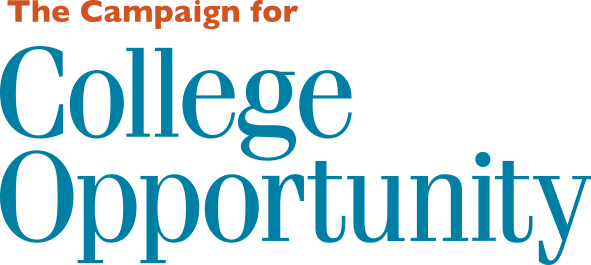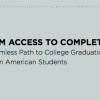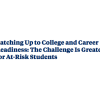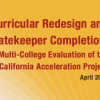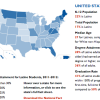
Born in Ennis, Texas—a mid-sized town about 40 miles south of Dallas—Diedrea Lewis, 47, was the tenth child of a large African American family headed by her father, a U.S. veteran and a custodian, and her mother, a homemaker. Diedrea describes her family as “chronically poor,” and yet “it was always instilled in me to go to college. That was the equalizer.”
After graduating from Ennis High School in 1982, Diedrea enrolled at Navarro Community College in Corsicana, Texas, about 20 miles south of Ennis, where she lived in the dorms. Although she had some financial assistance, it was increasingly difficult for Diedrea to cover the costs. Tuition at the school at that time was about $150 per unit. After a year, Diedrea dropped out of college and moved to Dallas where she joined the work force, taking various administrative and switchboard operator jobs. In 1988, she gave birth to her daughter, Chassler. Times for her were very rough, but she never gave up on her dream of going to college. In 1990, she got another chance.
Diedrea won a trivia contest on a local Dallas radio station, and her winning prize was a pair of front-row seats to a New Kids on the Block concert. Back then, the tickets were a hot item. “I sold those tickets to buy a bus ticket out to California because I had heard that you can practically go to college for free,” Diedrea said. She had heard that fees in the California Community College system were $5 per unit. “I thought, ‘Who couldn’t afford that?!’ ” With little more than the clothes on her back, Diedrea and her infant daughter set out for California and the promise of an affordable higher education. She wanted to study broadcast journalism or mass communications and dreamed of becoming a sportscaster like Jayne Kennedy, the African American sports commentator who was among the first women to break into broadcast sports.
Diedrea ended up in Chula Vista, California, a city midway between San Diego and the U.S./Mexican Border. To support herself and her daughter, she again took work as a switchboard operator, and she explored careers like air traffic control. Making ends meet was always difficult, and at times she was on public assistance. “The last two weeks of the month, that’s when it got really tight,” she remembers. “It really got hard.”
Four years after her arrival in San Diego, Diedrea enrolled at San Diego City College (SDCC). After years of working at administrative jobs, her life had finally settled into a routine. She had a decent apartment, and Chassler was enrolled in school, so the high cost of childcare was no longer a worry. She could finally allocate time to pursuing her educational dreams.
While it seemed that Diedrea was on her way, she ended up attending SDCC intermittently for over a decade—from 1994 to 2006—often dropping out for years at a time to work and save money to put toward fees and books. In all, she earned only 29.5 units at SDCC, far below the number of units required for an associate’s degree, vocational certificate, or transfer.
Diedrea says she continued to enroll in classes through the years as a way to stay connected, however tentatively, to her dream of going to college. “I was in a situation where I would start the class and drop the class, start and drop, start and drop because I couldn’t afford the books. I needed to work to afford to pay for my books. It was difficult to do both work and school. And have a daughter,” Diedrea explained. “When a test or a project came due, and you need the book and you can’t afford the book, then it’s all for nothing. It’s very disheartening and very discouraging.”
Diedrea laments that she had nobody in her circle of friends and family at SDCC who could guide her.
“I felt like one of those people who had fallen through the cracks,”
she explains. Diedrea began to think that perhaps she wasn’t a fit for SDCC or even college itself.
Then by chance in 2006, Diedrea found what she had been seeking. As part of a vocational rehabilitation program, she enrolled at nearby Grossmont Community College, where she completed an Emergency 911 Certification class. Before class and during breaks, she chatted with the Grossmont staff. “I talked to people who worked in various departments—Financial Aid, Admissions and Records, Counseling and EOPS (Extended Opportunity Programs and Services). They were very friendly. They wanted to help,” Diedrea said. “It was a whole different atmosphere. It was positive, uplifting, and it made me want to work as hard as I did.”
Although Grossmont was further from her home, two busses and a trolley ride away, Diedrea re-enrolled in the spring of 2007.
At Grossmont, she learned she was eligible to receive grants, other financial assistance and specialized counseling through EOPS, a program that provides support for educationally disadvantaged students. Diedrea suffers from a degenerative arthritic condition requiring her to use a power chair to get around. Through the Disabled Student Programs and Services (DSPS), she found mobility assistance and was eventually diagnosed with Attention Deficit Hyperactivity Disorder (ADHD), a condition she had long suspected. Another program utilized by Diedrea is called New Horizons. Located in the same office of the EOPS program, New Horizons provided assistance to single parents, displaced homemakers or single pregnant women. From this program she was able to receive much needed textbook support, transportation funds, parking permits, and counseling made available to each student that entailed academic, career, and personal counseling. Diedrea learned that the same programs had been available at SDCC all along, but she was never aware of them.
“Once all the different resources were made available to me, I was like ‘I’m in the right place. I’ve got to do better.’ ”
She enrolled in 14 units and in the end earned a 3.5 grade point average. “I had received counseling and that’s when I started getting serious. The difference was the quality of the appointment.” For example, according to Diedrea, counselors at Grossmont will spend an hour with a student if the purpose of the session is to create an education plan, a course plan for transfer students. “If it’s something serious like that, the counselors want to make sure they have the time to assist you in anything and everything you need,” said Diedrea.
“The books are the most expensive things in attending a community college. Even though tuition is very low or you qualify for the BOG waiver [Board of Governors Fee Waiver, which waives enrollment fees to eligible students] that doesn’t mean a hill of beans if you cannot afford to pay for your books,” Diedrea explains. At Grossmont, she was especially thankful for the professors who announced in class that one copy of the course textbook would be on loan in the library should a student be unable to afford to purchase the book.
Diedrea feels strongly that at Grossmont, the excellent dissemination of resource information and the welcoming and attentive staff were invaluable. “They helped me be a better student each and every step of the way,” she said. “There is no better community college than Grossmont College.”
After years of struggle and perseverance, Diedrea finally made it. She earned an AA in University Transfer Studies with a Major in Theatre from Grossmont. In the fall of 2011, she transferred to San Diego State University, where she is now a communications major.
Today, she has a simple yet heartfelt message for legislators: “We’re going to forever have a budget crisis, but you need to invest in your people. Nobody should have to go through what I’ve gone through. We’re going to become a permanent underclass if they don’t invest in education so that community colleges can offer students the support services they need to be successful.”
Student Success Indicator
Knowledge of, and access to, critical student support services. Diedrea’s story illustrates the importance of support services for capable students facing real life challenges. Some colleges serve a greater proportion of high-needs students but, comparing colleges of similar size and demographics, some are more effective at closing the achievement gap for underrepresented minority students.* Best practices should be identified and shared systemwide.
SOURCE: *Moore, C., Shulock, N. (2010). Divided We Fail: Improving Completion and Closing Racial Gaps in California’s Community Colleges. Institute for Higher Education Leadership & Policy, CSU Sacramento
